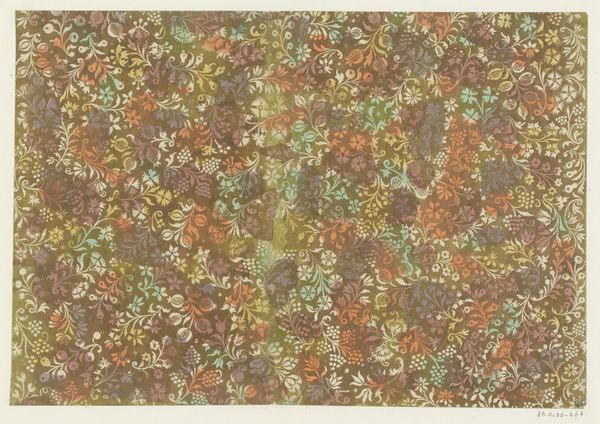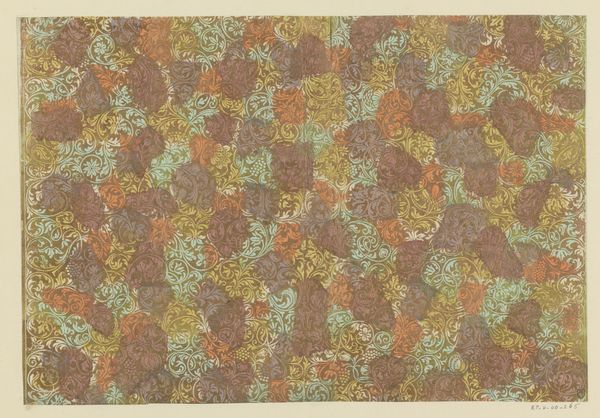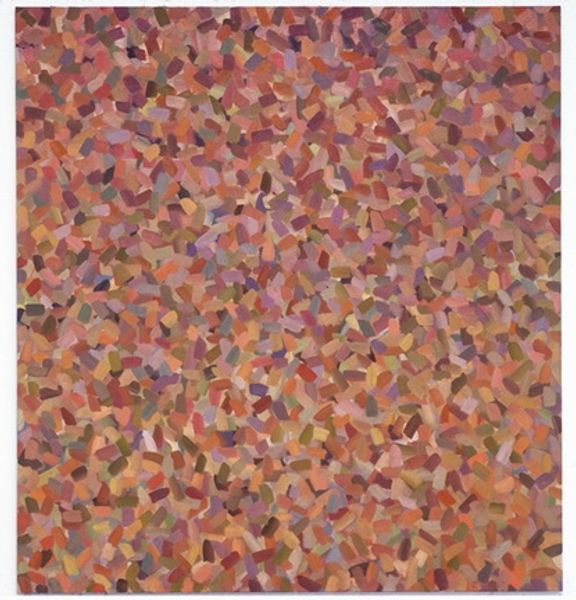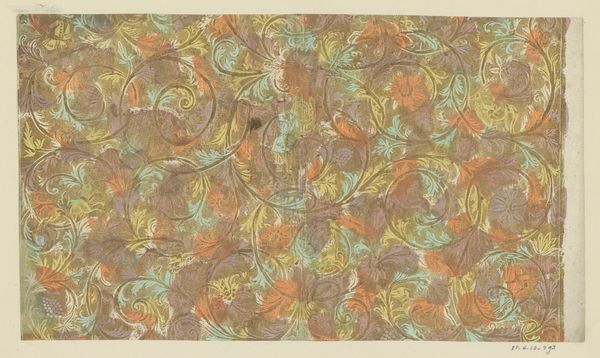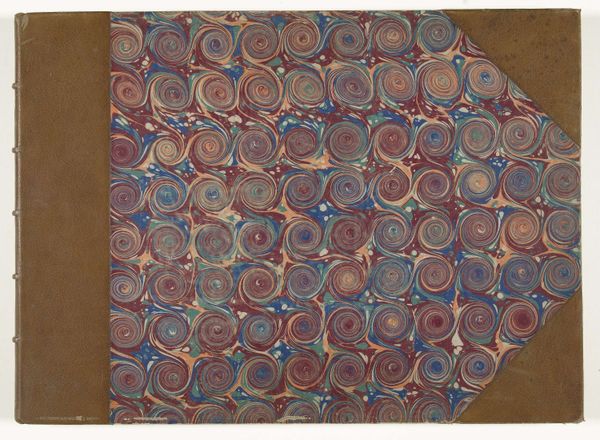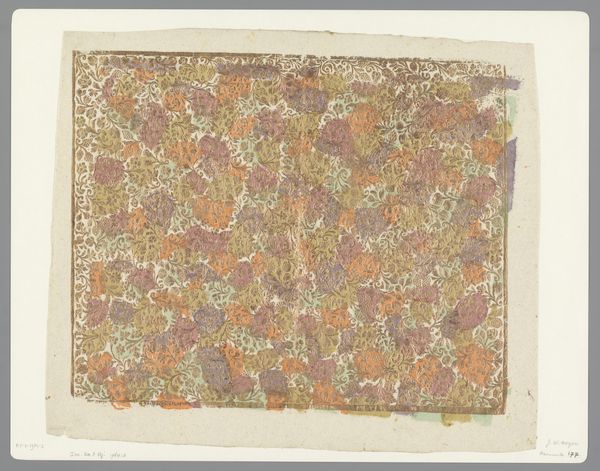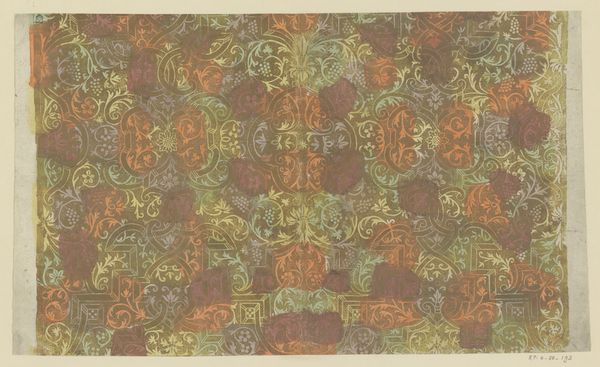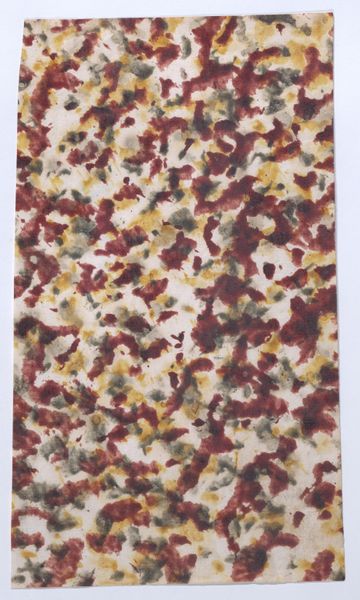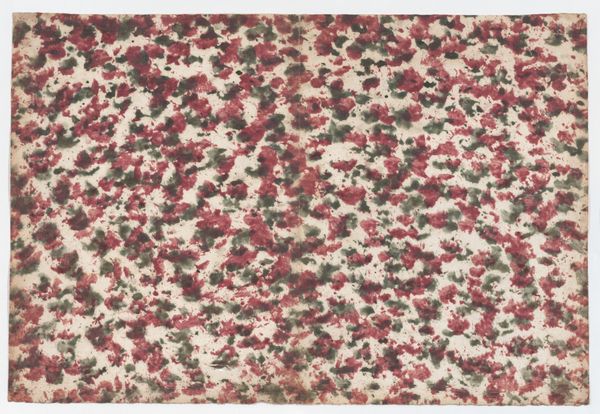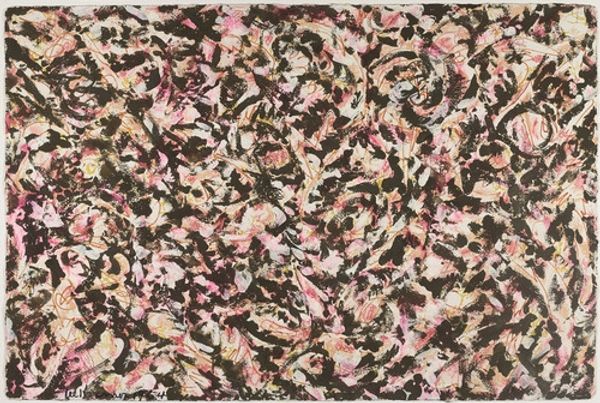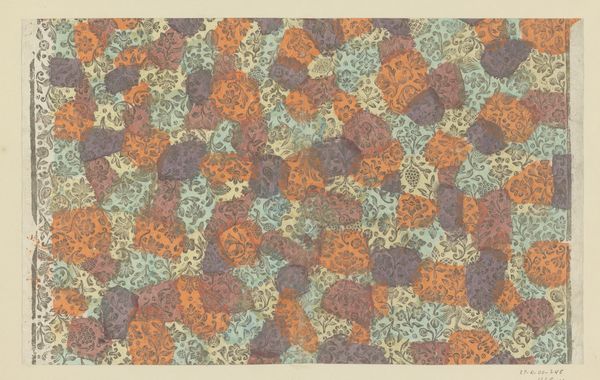
drawing, paper
#
drawing
#
organic
#
paper
#
organic pattern
#
flower pattern
Dimensions: height 284 mm, width 370 mm
Copyright: Rijks Museum: Open Domain
Curator: Right now, we’re looking at a piece entitled "Blad met ranken met bloemen en vruchten," or “Sheet with vines with flowers and fruits," by Joseph Friedrich Leopold. It was created sometime between 1699 and 1727 and resides here at the Rijksmuseum. It’s a drawing done on paper. Editor: Woah, okay, my first thought? It looks like the wallpaper from a particularly intense fever dream. All those blooms crammed together… It's giving me the visual equivalent of a crowded marketplace. Curator: That’s a great initial impression. Let's unpack some of the context here. During the late 17th and early 18th centuries, there was a significant interest in botany and natural history. This piece reflects a growing impulse to classify and document the natural world. Think about how these images, beyond their aesthetic value, contributed to colonial projects. They created visual databases used to understand, exploit, and ultimately control the resources of colonized lands. Editor: Oh, interesting, so this isn't just a pretty pattern, it’s like… botanical espionage? The flowers themselves seem almost aggressively cheerful in their repetition. Is that deliberate, do you think? A way to distract from the inherent violence of its context? Curator: I think it's fair to consider that. The density of the pattern—the relentless repetition of these floral motifs—certainly suggests a kind of obsessive quality. We have to acknowledge that the pursuit of knowledge was, and often still is, deeply entwined with power dynamics. Consider how knowledge itself can become a tool of oppression. Editor: Okay, I'm seeing it differently now. It’s still visually overwhelming, but in a way that feels… loaded. It's less about innocent beauty and more about the relentless collection and classification, turning nature into a resource. The more I look at this drawing, the more uneasy I feel. Curator: That's the power of engaging with art through a critical lens. It challenges us to confront the complexities and contradictions inherent in our history. Editor: Yeah, like peeling back layers of petals to reveal a rather thorny truth. Well, that’s made me see floral wallpaper in a totally new light, I might need therapy after this… but that's the sign of great art, right?
Comments
No comments
Be the first to comment and join the conversation on the ultimate creative platform.
